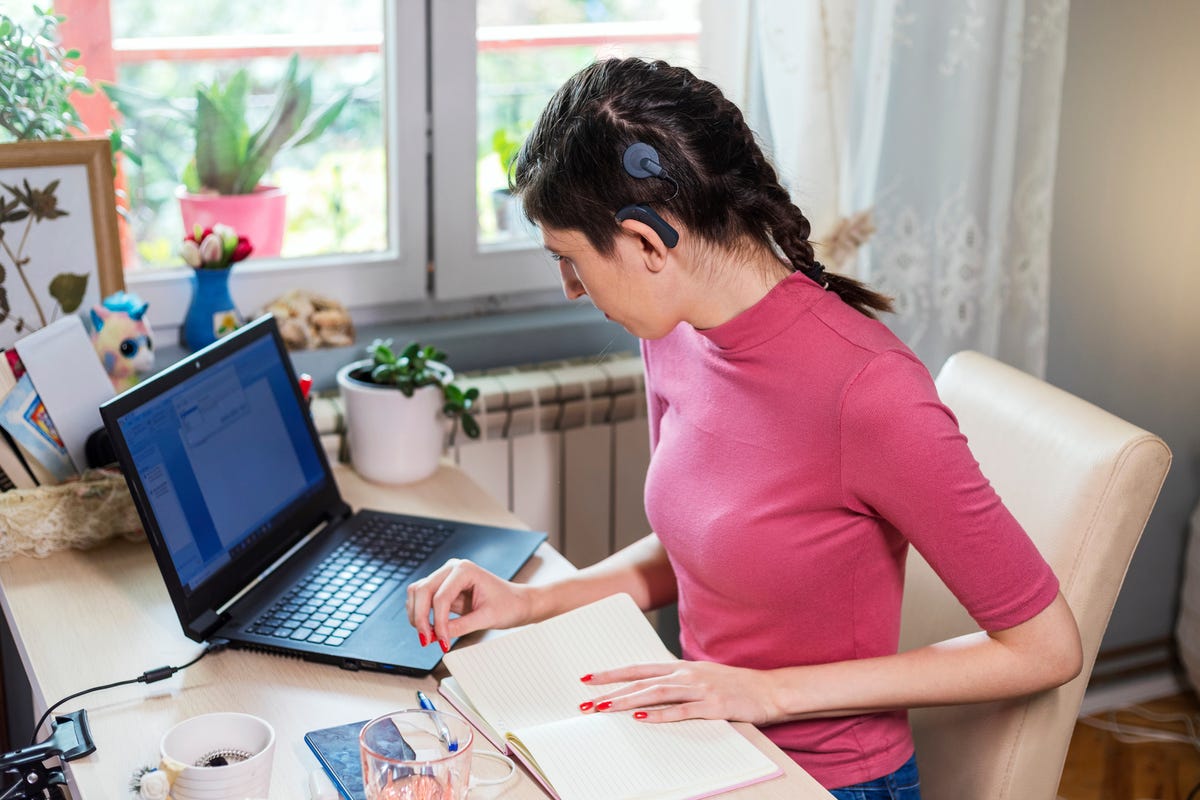Hearing aids have improved by leaps and bounds over the past few decades. As microprocessors and microphones have rapidly become smaller and more inexpensive to produce, manufacturers have managed to pack small, standard hearing aids with features that make them more useful than ever before.
One challenge with hearing aids is that, with their standard microphones, there is almost always the challenge of ambient background noise, making it hard to pick out what you want to listen to most. To combat this challenge, many OTC hearing aids can now go around the microphone and directly input audio to your ears, bypassing ambient noise. They do this by connecting to a variety of electronic devices.
Read more: Are You a Good Candidate for Over-the-Counter-Hearing Aids?
Types of electronic devices compatible with hearing aids

Computers and laptops also often use Bluetooth to connect to headphones. By choosing this option, you can more easily participate in video calls and watch videos or streaming services.
Televisions
While older televisions may have less of this capability, your modern TVs often have Bluetooth or other hearing aid-capable sound systems. Being able to tie in directly to the television can help you drown out external conversations and focus on what you’re watching.
Read more: Everything You Need to Know Before Buying OTC Hearing Aids
How to connect your hearing aids to electronic devices
It’s best to check the hearing aid owner’s manual and look up your electronic devices online to get exact steps for connecting your hearing aids, but most likely, they’ll use one of the following tools. If you’re still shopping for hearing aids, look for these features if you want to connect to electronic devices.
Bluetooth connectivity
Bluetooth is an exciting technology that pairs devices wirelessly — while the most common transmission is audio, it’s possible to use it to share photographs and other files as well. With hearing aids, you’ll most likely need to enable Bluetooth “discoverability” on your aids.
For example, you might open settings on your phone and find the Bluetooth settings section. There, it would list any Bluetooth-discoverable devices within range and allow you to select “pair.” This establishes the initial connection. After that, you’d usually select “connect” to move your hearing aids from their general listening mode to listening to your phone.
Computers and tablets will have similar Bluetooth processes for finding a discoverable hearing aid, pairing with it and then connecting in. Be aware that when you want to start listening to the outside environment, you’ll need to disconnect as well, so experiment with disconnecting as well and make sure you always have your hearing aids ready for listening to the outside world as well.
Direct audio input
Direct audio input is a wired connection that allows some hearing aids to plug into devices like phones and computers, giving you access to audio that doesn’t have to come through the hearing aid’s microphones. Be aware that this feature is primarily in behind-the-ear hearing aids. Cutting out interference and background noise yields a stronger quality signal. Read a bit about your hearing aids to find out if DAI fully cuts off your microphone or if you have the option to hear both the environment around you and the electronic device.
Telecoils
T-coils, T-Switches or telecoils are a technology based on a coil of wire that acts as an antenna and can pick up telecoil-enabled electromagnetic transmissions, like sound amplification in a crowded meeting room. While switching to telecoil mode may be a hassle for some, it can cut out some of the electromagnetic interference devices caused with hearing aids. The sound will be different in many cases when using telecoil technology. Still, it is worth trying it, particularly if you’re in a room with telecoil-enabled technology and are having trouble hearing with your aid’s standard microphone mode.
Tips for using hearing aids with electronic devices
Once you’ve made the electronic devices connect, you want to maximize the value of this connection so that you can hear and understand.
Adjust the volume
Experiment a bit with your hearing aid and electronic device: usually, both your hearing aid and your electronics will have volume controls, but turning either of them up high can result in ear-splitting sound levels, especially if you do both at once. Find the right level that will allow you to adjust as you go if you’re moving around outside, such as listening to a book while on a walk.

